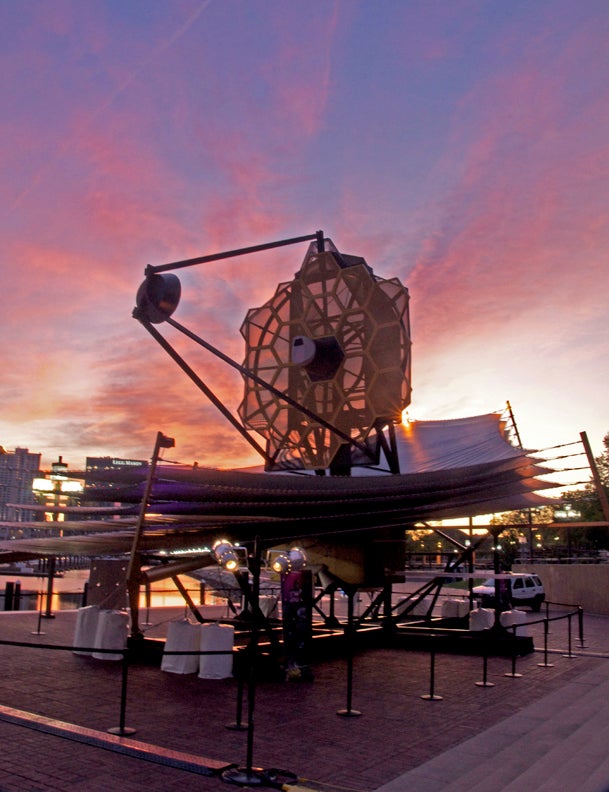Scientists to map mysterious dark matter with new Nasa telescope
Dark matter makes up the majority of the universe, but has never actually been detected

A new Nasa telescope coming this year will help UK scientists search for dark matter, the strange substance that makes up the vast majority of the universe but has never been directly detected.
Scientists from Durham University are among a team of 50 researchers from around the world taking part in the Cosmos-Webb programme, which will survey a patch of sky near the constellation Sextans.
They will use Nasa's James Webb Space Telescope (JWST), the most powerful space telescope ever built, which is scheduled for launch in October and will become the successor to the Hubble Space Telescope.
The cosmologists will work to map the dark matter around galaxies, with the aim of unlocking the secrets of the mysterious substance that makes up the vast majority of matter in the universe.
Experts believe that as the universe began to expand, galaxies formed and grew when gas cooled and condensed at the centre of enormous clumps of this dark matter.
While scientists have observed the gravitational effects of dark matter for decades, its true nature still remains a mystery.
"Dark matter is invisible”, Professor Richard Massey, Royal Society University Research Fellow, of the Institute for Computational Cosmology at Durham University, said, "but in this same patch of sky, we used the Hubble Space Telescope to make the first 3D map of dark matter, by noticing how it affects all the visible things around it.
"Now the JWST will zoom in on individual clumps of dark matter with unprecedented resolution."
The professor added that one of the main goals of the programme is to trace the relationship between dark matter and galaxies farther back in time, from the Big Bang nearly 14 billion years ago to the present day.
The JWST, which took 15 years to develop at a cost of around 10 billion US dollars (£7.25 billion), is expected to launch on the European Space Agency's Ariane 5 rocket from French Guiana on October 31.
It is named after James Edwin Webb, the second administrator of Nasa.
The JWST is the largest space observatory ever built, with a huge sunshield base that measures 22m by 12m - about the size of a tennis court.
Its infrared telescope will look at objects more than 13 billion light years away.
As it takes an enormous amount of time for light to travel across the universe, the JWST will effectively be looking at objects 13.6 billion years ago, around 100 million years after the Big Bang - when the first stars and galaxies started to form.
After launching into space, the JWST will orbit the sun, flying up to 1.5 million kilometres from Earth.
This destination is a gravitational "sweet-spot" known as Lagrange Point, where spacecraft can maintain their position, making relatively few orbital corrections and preserve fuel.
Additional reporting by Press Association
Join our commenting forum
Join thought-provoking conversations, follow other Independent readers and see their replies
Comments
Bookmark popover
Removed from bookmarks